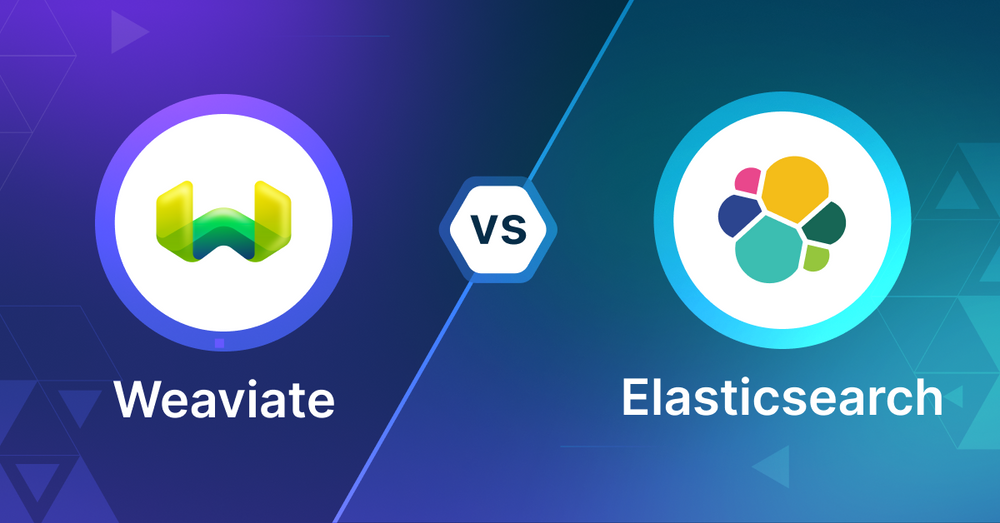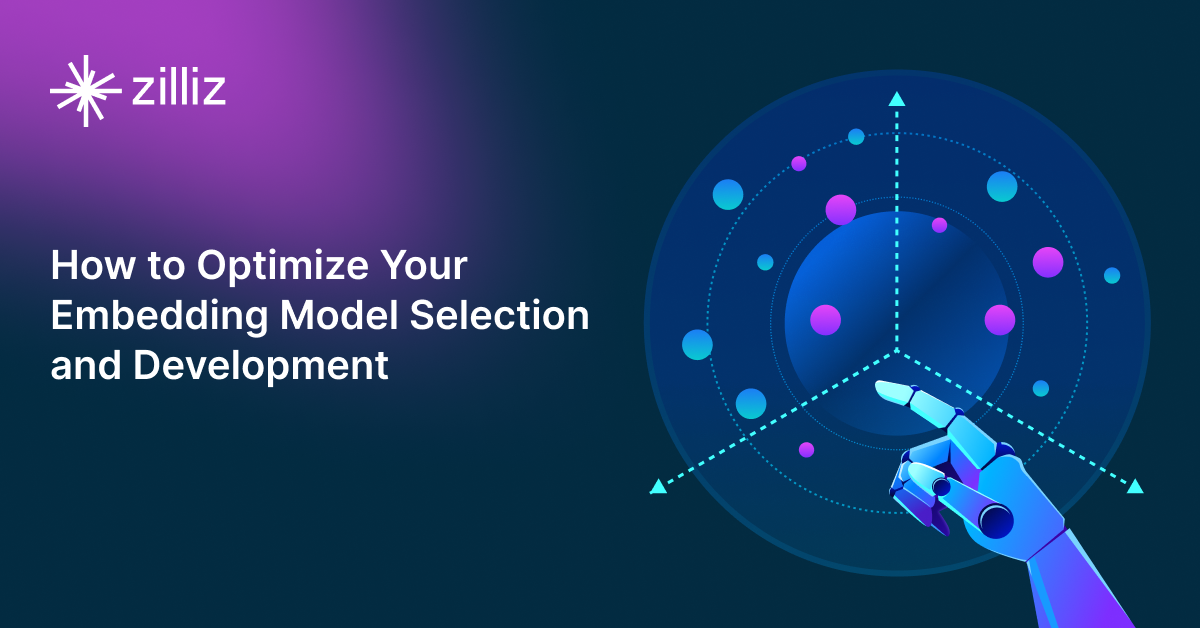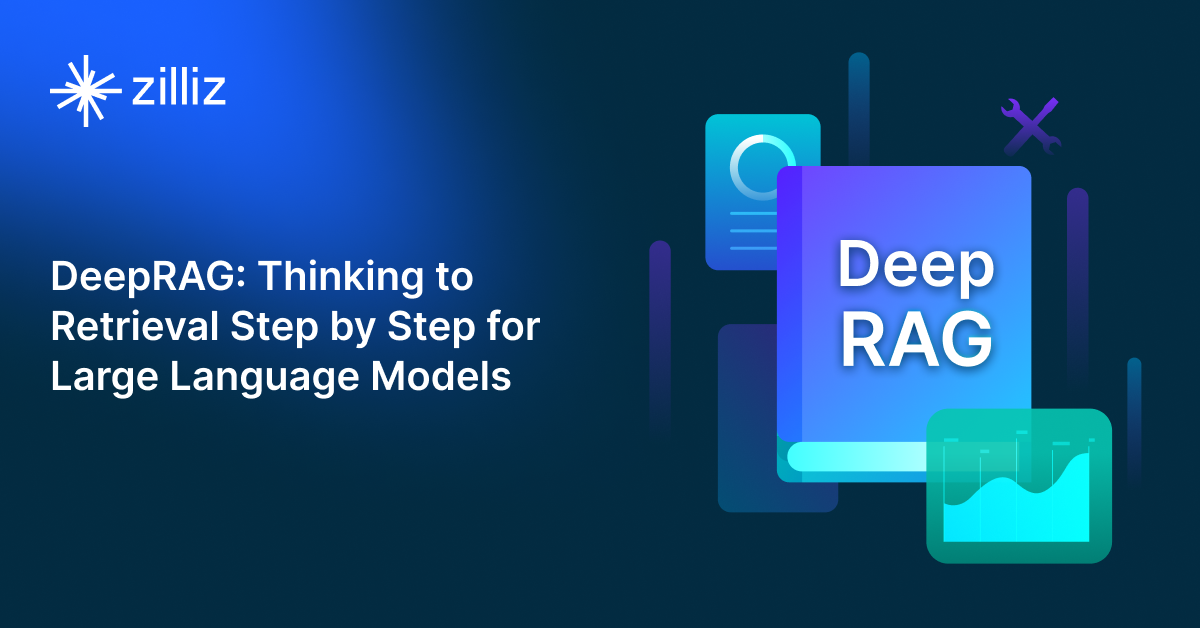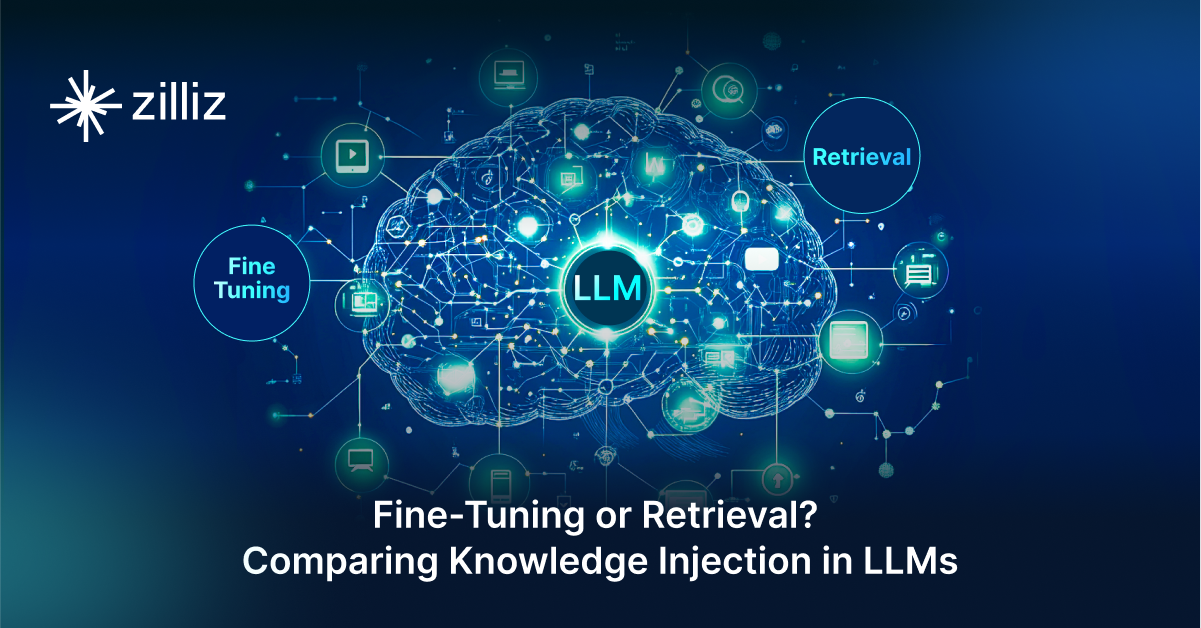Weaviate vs Elasticsearch: Choosing the Right Vector Database for Your Needs

In data retrieval and search technologies, Weaviate and Elasticsearch are two options. While both offer search capabilities, they cater to different needs and use cases. This article compares these two technologies to help you make an informed decision for your project.
What is a Vector Database?
Before we compare Weaviate and Elasticsearch, let's first explore the concept of vector databases.
A vector database is specifically designed to store and query high-dimensional vectors, which are numerical representations of unstructured data. These vectors encode complex information, such as the semantic meaning of text, the visual features of images, or product attributes. By enabling efficient similarity searches, vector databases play a pivotal role in AI applications, allowing for more advanced data analysis and retrieval.
Common use cases for vector databases include e-commerce product recommendations, content discovery platforms, anomaly detection in cybersecurity, medical image analysis, and natural language processing (NLP) tasks. They also play a crucial role in Retrieval Augmented Generation (RAG), a technique that enhances the performance of large language models (LLMs) by providing external knowledge to reduce issues like AI hallucinations.
There are many types of vector databases available in the market, including:
Purpose-built vector databases such as Milvus, Zilliz Cloud (fully managed Milvus), and Weaviate
Lightweight vector databases such as Chroma and Milvus Lite.
Traditional databases with vector search add-ons capable of performing small-scale vector searches.
Weaviate is an open-source, purpose-built vector database, while Elasticsearch is a NoSQL database that has evolved to include vector search capabilities as an add-on.
What is Weaviate?
Weaviate is an open-source, purpose-built vector database. It integrates vector search with a graph-like data model, allowing developers to store and retrieve data based on its vector representation. Weaviate is built from the ground up to support semantic search, which means it doesn't just rely on keyword matching but understands the meaning and context of data through vectors.
This capability is especially useful in AI applications where data can come in many forms—text, images, or even complex multi-modal datasets. Weaviate simplifies the process of turning unstructured data into vectors and enables similarity searches based on these vectors. It comes with out-of-the-box integration for machine learning models, allowing developers to automatically vectorize data using pre-trained models.
What is Elasticsearch?
Elasticsearch is a distributed, RESTful search and analytics engine that has long been a staple in the world of full-text search and data analytics. As part of the broader Elastic Stack, which includes tools like Logstash for data processing and Kibana for visualization, Elasticsearch is widely used for tasks ranging from keyword search to real-time log and event data analysis.
While Elasticsearch is primarily known for its inverted index-based search, which excels in keyword and full-text search, it has recently expanded to include vector search capabilities. This addition allows Elasticsearch to handle semantic search, although its core strength remains in traditional search and analytics.
Weaviate vs. Elasticsearch: Key Differences
Search Methodology
The primary distinction between Weaviate and Elasticsearch lies in their search methodologies. Weaviate uses vector search, representing data as high-dimensional vectors. This allows for semantic searches based on the meaning and context of the data, rather than just keywords. Elasticsearch, however, primarily uses inverted index-based search, which is effective for full-text search and keyword matching. While it has some vector capabilities, its core strength lies in traditional text-based search.
Data Handling
When it comes to data handling, Weaviate is proficient at managing unstructured and semi-structured data. Its vector-based approach makes it suitable for working with text, images, and other complex data types. Elasticsearch, designed to handle both structured and unstructured data efficiently, is particularly effective with log and time-series data, making it a common choice for log analytics and monitoring.
Integrations
The integration of AI and machine learning is another area where these technologies differ. Weaviate is built with AI integration in mind, capable of automatically vectorizing data using pre-trained models and performing similarity searches based on these vectors. Elasticsearch offers machine learning capabilities through X-Pack, but these are more focused on anomaly detection and forecasting rather than semantic understanding.
Scalability and Performance
Both Weaviate and Elasticsearch are designed to be scalable, but they approach it differently. Weaviate uses a distributed architecture that allows for horizontal scaling, with its vector-based approach providing efficient similarity searches, especially for complex queries. Elasticsearch is known for its distributed nature and can scale horizontally across multiple servers, making it particularly efficient for large-scale log processing and analytics.
Use Cases and Performance
Weaviate shines in semantic search applications, recommendation systems, image and multi-modal search, and natural language processing tasks. Its performance in similarity searches and semantic queries is noteworthy, though it can vary based on the dimensionality of vectors and the size of the dataset. Weaviate may require more computational resources for vector calculations, and in some cases, specialized hardware like GPUs for large-scale vector operations.
Elasticsearch is well-suited for full-text search, log and event data analysis, business and website search, and metrics and time-series data analysis. It offers fast full-text search and aggregations, performs well with large volumes of log and time-series data, and provides efficient document-based queries and filters. Elasticsearch works well with commodity hardware for most use cases.
Ease of Use and Ecosystem
Weaviate has a learning curve, especially for those new to vector databases. However, it offers GraphQL and REST APIs, making it accessible once you understand the concepts. Weaviate integrates with machine learning frameworks and can be used alongside traditional databases. Its ecosystem, while growing, is smaller compared to Elasticsearch.
Elasticsearch is well-documented and has a large community, which can make it easier to get started. Its REST API is straightforward, and there are numerous client libraries available. As part of the Elastic Stack, which includes Logstash for data processing and Kibana for visualization, Elasticsearch offers a more comprehensive solution for data ingestion, search, and analytics.
Data Modeling and Query Languages
Weaviate uses a flexible, schema-less approach with optional type definitions. It supports multi-modal data within a single index and allows for complex relationships between objects. Weaviate offers a GraphQL API for querying and mutations, provides a RESTful API for management and some query operations, and supports vector-based queries and filters.
Elasticsearch offers dynamic mapping with the option for strict schema definitions. It provides a variety of field types for different data structures and supports parent-child relationships and nested objects. Elasticsearch uses a JSON-based Query DSL for complex queries, offers a simple Query String syntax for basic searches, and provides a RESTful API for all operations.
Community, Support, and Licensing
Weaviate has a growing open-source community, offers documentation and tutorials for getting started, and provides commercial support options through SeMI Technologies. It's open-source and free to use, with cloud-hosted options available for those who prefer managed solutions.
Elasticsearch boasts a large, established community with extensive resources. It offers comprehensive documentation and training materials, and provides commercial support and consulting through Elastic. Elasticsearch offers both open-source and paid versions, with some advanced features only available in the paid versions.
Conclusion
Both Weaviate and Elasticsearch are capable search technologies, each with its strengths. Weaviate's vector-based approach makes it suitable for AI-driven applications and semantic search, while Elasticsearch's robust full-text search and analytics capabilities make it a versatile choice for a wide range of traditional search and log analysis use cases.
When making your decision, consider your specific needs. If you're building an AI-first application with a focus on understanding meaning and context, Weaviate might be the better choice. If you need a proven solution for full-text search, log analysis, and general-purpose search and analytics, and small-scale vector searches, Elasticsearch could be more suitable.
The choice between Weaviate and Elasticsearch depends on your specific use case, the nature of your data, and your future scalability needs. Both technologies continue to evolve, so it's worth keeping an eye on their development as you make your decision. Remember that in some cases, a hybrid approach using both technologies might be the optimal solution, leveraging the strengths of each for different aspects of your application. As with any technology decision, it's advisable to conduct thorough testing with your specific datasets and use cases before making a final choice.
Using Open-source VectorDBBench to Evaluate and Compare Vector Databases on Your Own
VectorDBBench is an open-source benchmarking tool designed for users who require high-performance data storage and retrieval systems, particularly vector databases. This tool allows users to test and compare the performance of different vector database systems such as Milvus and Zilliz Cloud (the managed Milvus) using their own datasets, and determine the most suitable one for their use cases. Using VectorDBBench, users can make informed decisions based on the actual vector database performance rather than relying on marketing claims or anecdotal evidence.
VectorDBBench is written in Python and licensed under the MIT open-source license, meaning anyone can freely use, modify, and distribute it. The tool is actively maintained by a community of developers committed to improving its features and performance.
Download VectorDBBench from its GitHub repository to reproduce our benchmark results or obtain performance results on your own datasets.
Take a quick look at the performance of mainstream vector databases on the VectorDBBench Leaderboard.
Read the following blogs to learn more about vector database evaluation.
Further Resources about VectorDB, GenAI, and ML
- What is a Vector Database?
- What is Weaviate?
- What is Elasticsearch?
- Weaviate vs. Elasticsearch: Key Differences
- Conclusion
- Using Open-source VectorDBBench to Evaluate and Compare Vector Databases on Your Own
- Further Resources about VectorDB, GenAI, and ML
Content
Start Free, Scale Easily
Try the fully-managed vector database built for your GenAI applications.
Try Zilliz Cloud for FreeKeep Reading

Optimizing Embedding Model Selection with TDA Clustering: A Strategic Guide for Vector Databases
Discover how Topological Data Analysis (TDA) reveals hidden embedding model weaknesses and helps optimize vector database performance.

DeepRAG: Thinking to Retrieval Step by Step for Large Language Models
In this article, we’ll explore how DeepRAG works, unpack its key components, and show how vector databases like Milvus and Zilliz Cloud can further enhance its retrieval capabilities.

Knowledge Injection in LLMs: Fine-Tuning and RAG
Explore knowledge injection techniques like fine-tuning and RAG. Compare their effectiveness in improving accuracy, knowledge retention, and task performance.
The Definitive Guide to Choosing a Vector Database
Overwhelmed by all the options? Learn key features to look for & how to evaluate with your own data. Choose with confidence.
